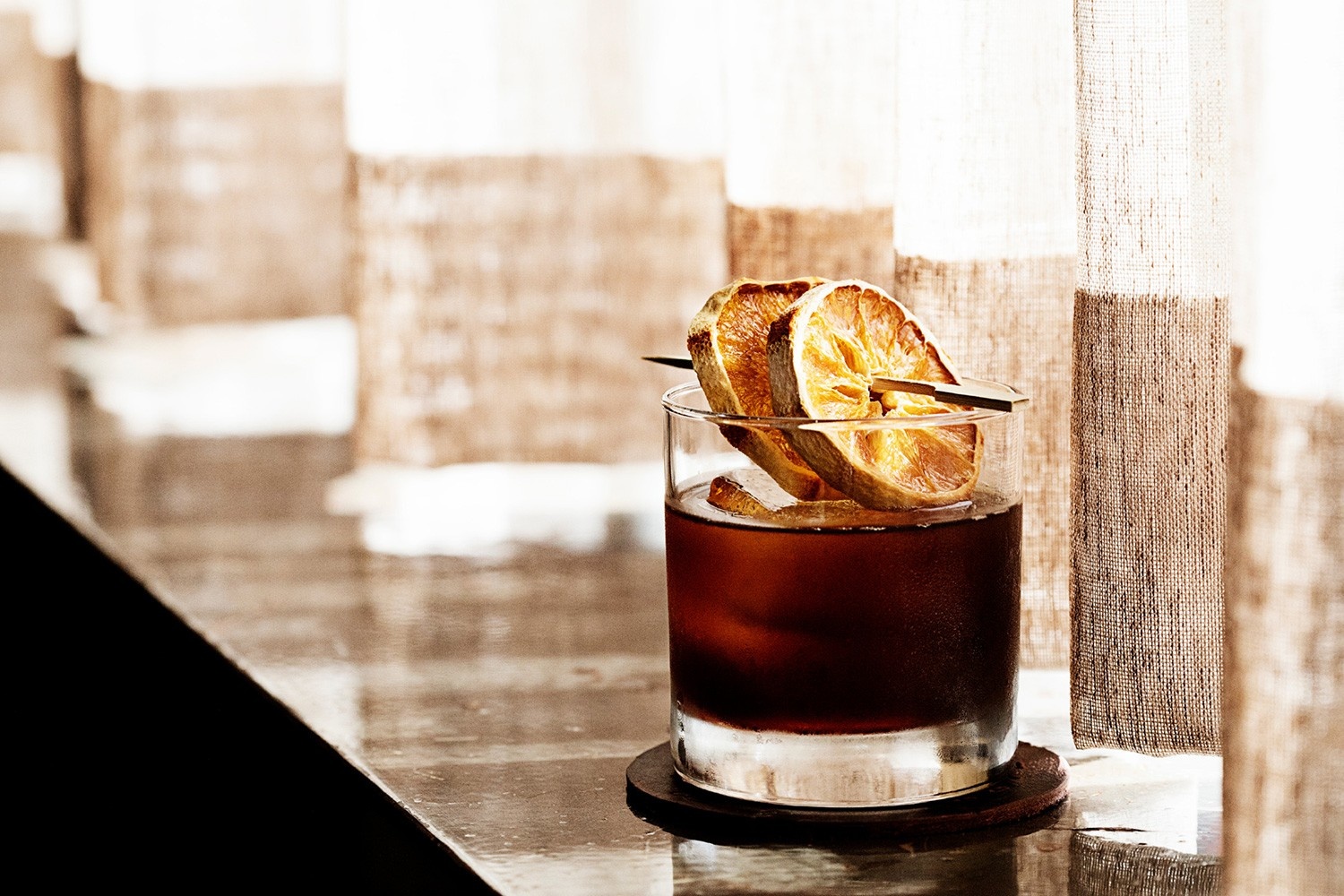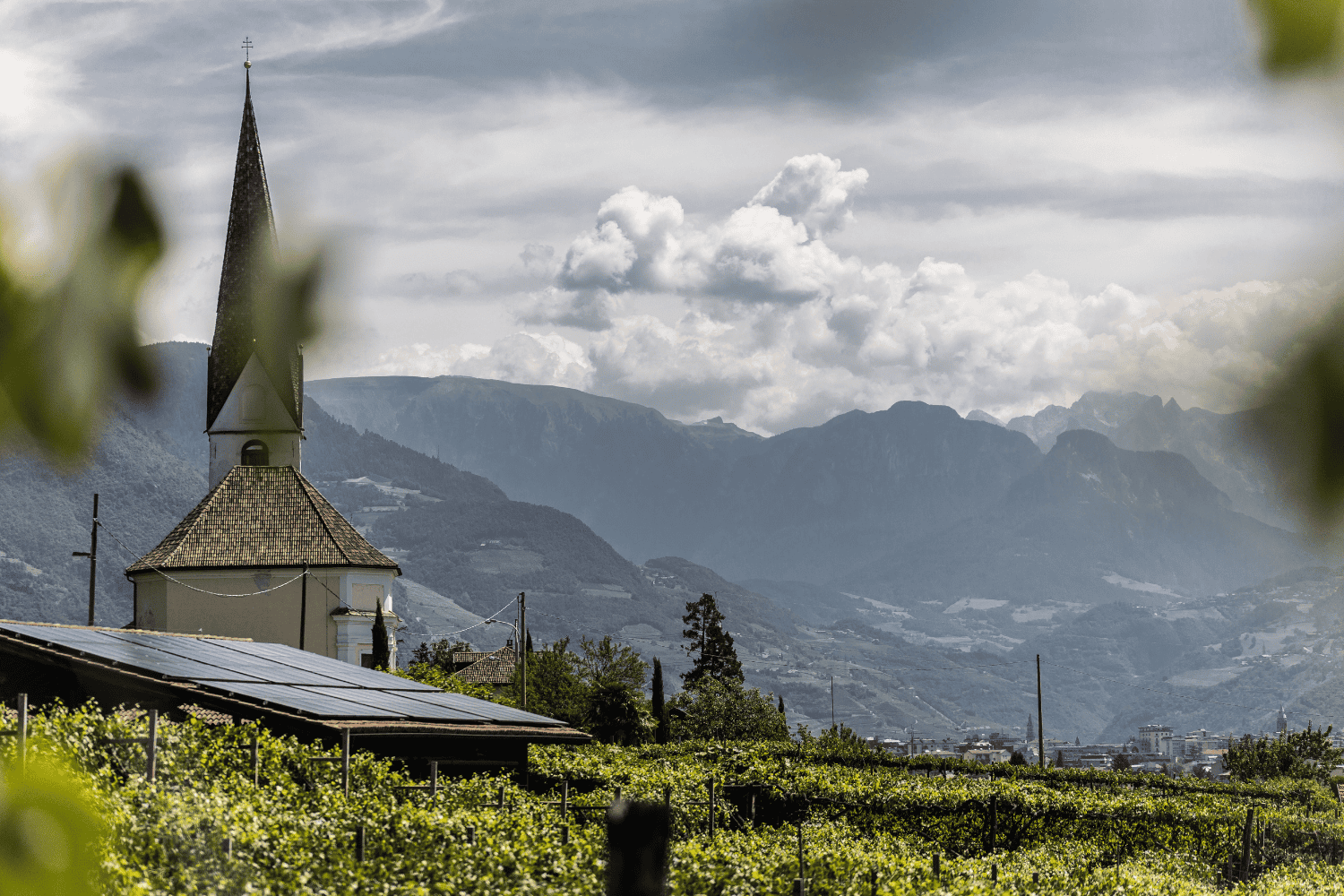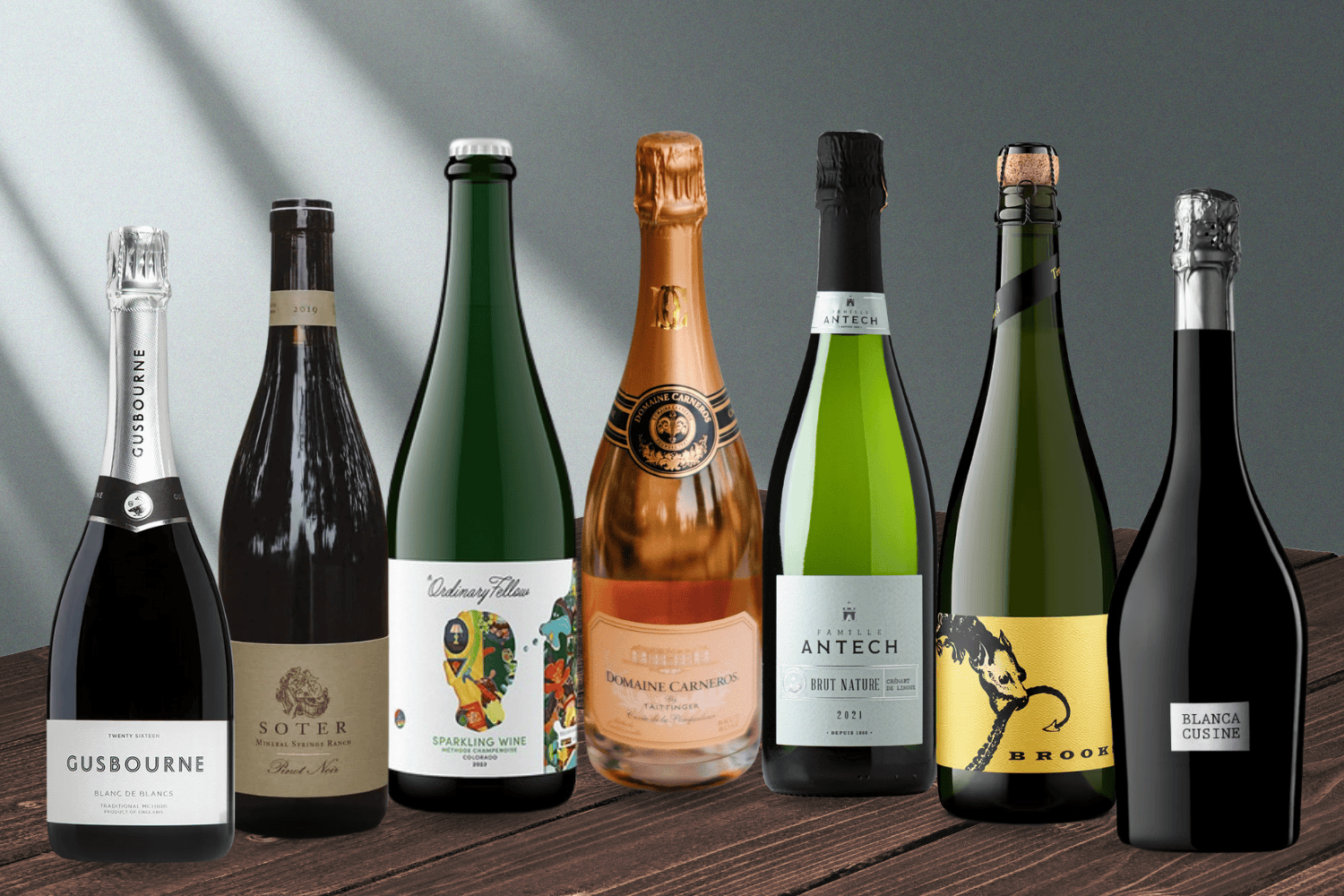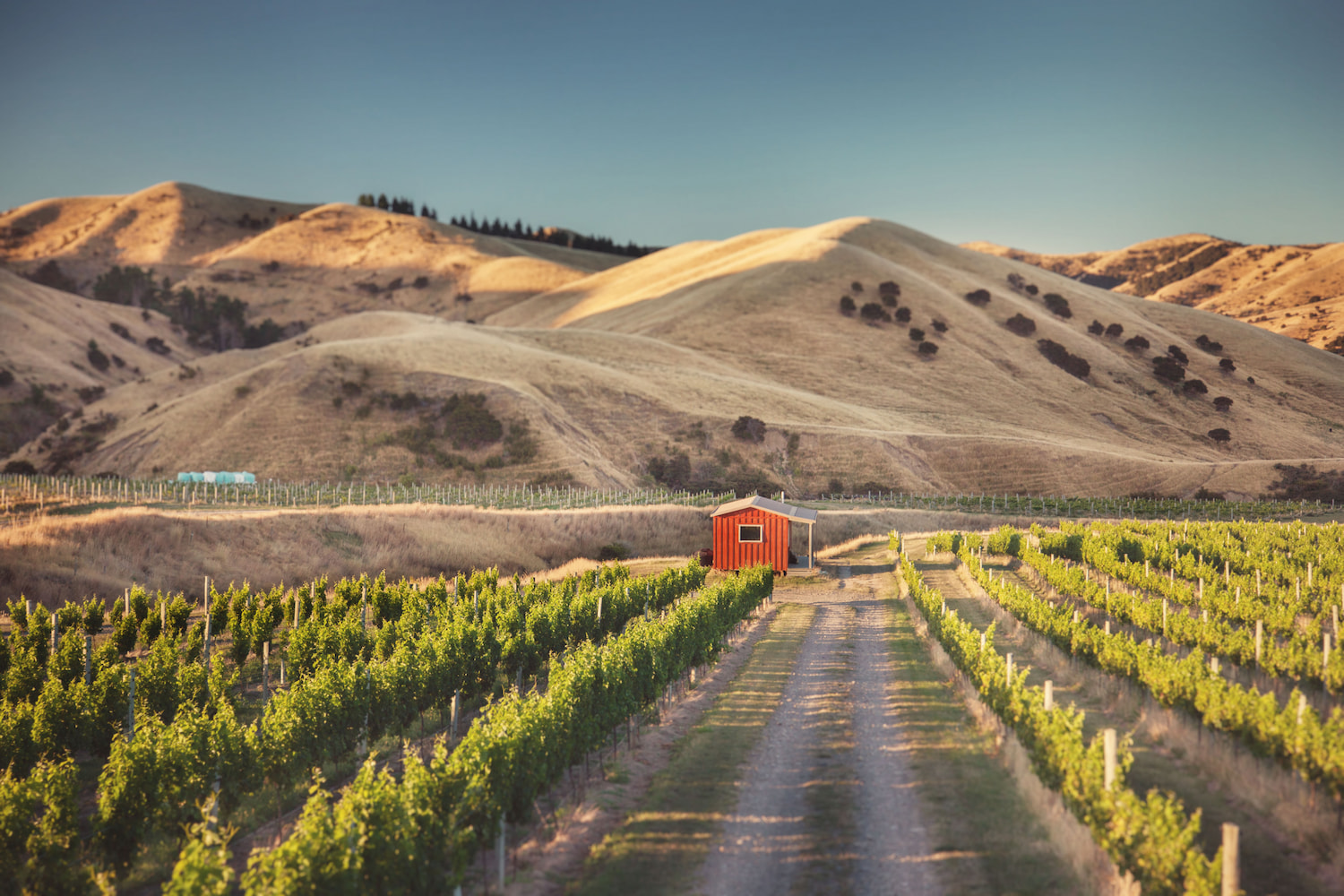North Stars:

Energy Efficiency

Waste Management

Water Management
“Sustainability is our ethos. It’s what everybody here believes in and strives for.”
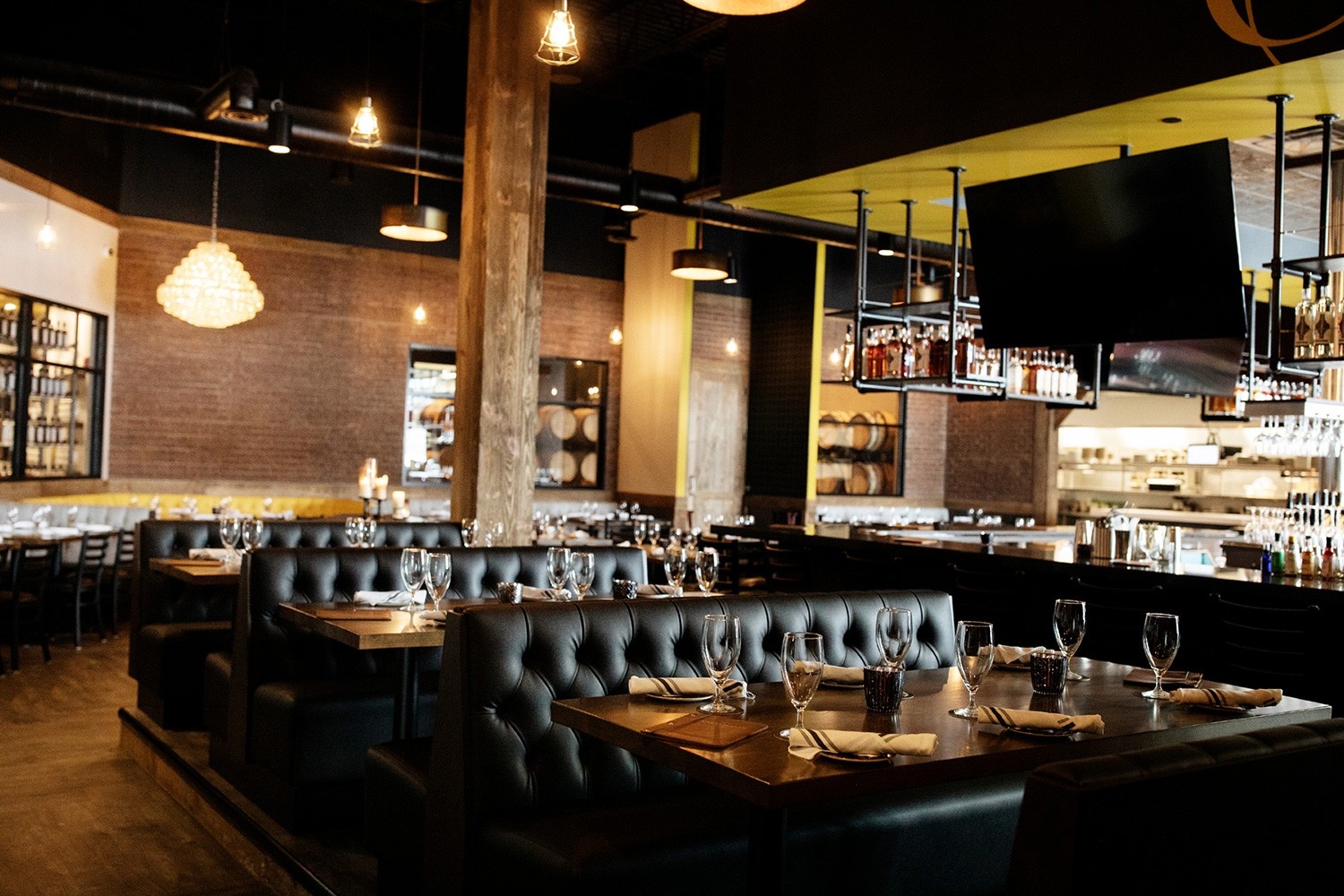
Tattersall Distilling's cocktail bar and dining room. Courtesy of Tattersall Distilling
The Azure Road Take
When Jon Kreidler, co-founder and chief officer of Tattersall Distilling, began scouting locations for a new distillery outpost, River Falls quickly rose to the top of the list. Though the western Wisconsin city has a modest population of just over 16,000, it’s become a leader in green practices and policies. For example, all municipal buildings run on renewable energy — a key factor in Tattersall’s decision to open there in 2021.
Today, the River Falls distillery includes a restaurant, event space, and a striking cocktail bar with leather booths and views into the barrel room. On the menu? Classic and creative drinks made with spirits distilled on-site. The Wisconsin Old Fashioned — a brandy-based twist on the traditional cocktail, muddled with cherries, citrus, and sugar — is a local rite of passage. (It was even named the official state cocktail in 2023.) Tattersall’s version sticks to the spirit of the original, while also offering a rye-based riff made with fruit sourced from Midwest family farms.
Sustainability Chops
“Sustainability is in our ethos,” said Kreidler. “It’s what everybody here believes in and strives for — it’s just always been a part of what we’re doing.”
When Tattersall took over a former big-box department store, the team redesigned the space with energy and water efficiency in mind. On the roof, a 405kW solar array — which Kreidler describes as “the largest solar array on a distillery in the country, probably in the world” — generates roughly 472,000 kWh of electricity per year, significantly reducing the facility’s reliance on fossil fuels.
The team also tackles one of the biggest environmental challenges in spirits production: water use. Distilling a single 750-milliliter bottle of whiskey typically consumes about 2.2 gallons of water. Tattersall cuts that by 40 percent through an on-site reclamation system. After distillation, the stillage — a mix of spent grain and water — is treated with food-grade coagulants and polymers to separate solids from liquid. The solids go to a local farm to feed bison and cattle, while the water is filtered and reused.

The Old Fashioned at Tattersall Distilling. Courtesy of Tattersall Distilling
The Sip
Breaking with tradition, Tattersall’s version of the Wisconsin Old Fashioned uses rye whiskey as a base spirit to embrace the Midwest’s terroir. For nearly a decade, Tattersall has sourced their rye from Dale Anderson, whose fourth-generation family farm in Cambridge, Minnesota, is approximately 75 miles from the distillery.
“Rye has always been our flagship whiskey,” said Kreidler. “We love the spice and character of it. Part of the reason is terroir. Most rye either comes from southern Canada, the Dakotas, or Minnesota. Rye grows really well in colder climates. It just makes sense for where we’re coming from.”
Tattersall’s Old Fashioned riffs on the classic recipe with chicory demerara, sour cherry liqueur, and tamari for a spirit-forward drink that embraces bold sweet, sour, and umami notes.
For those who can’t visit River Falls, Tattersall produces a bottled version that is available nationwide. Kreidler noted that the flavor of the bottled product is “really close” to the drink served at the cocktail bar.
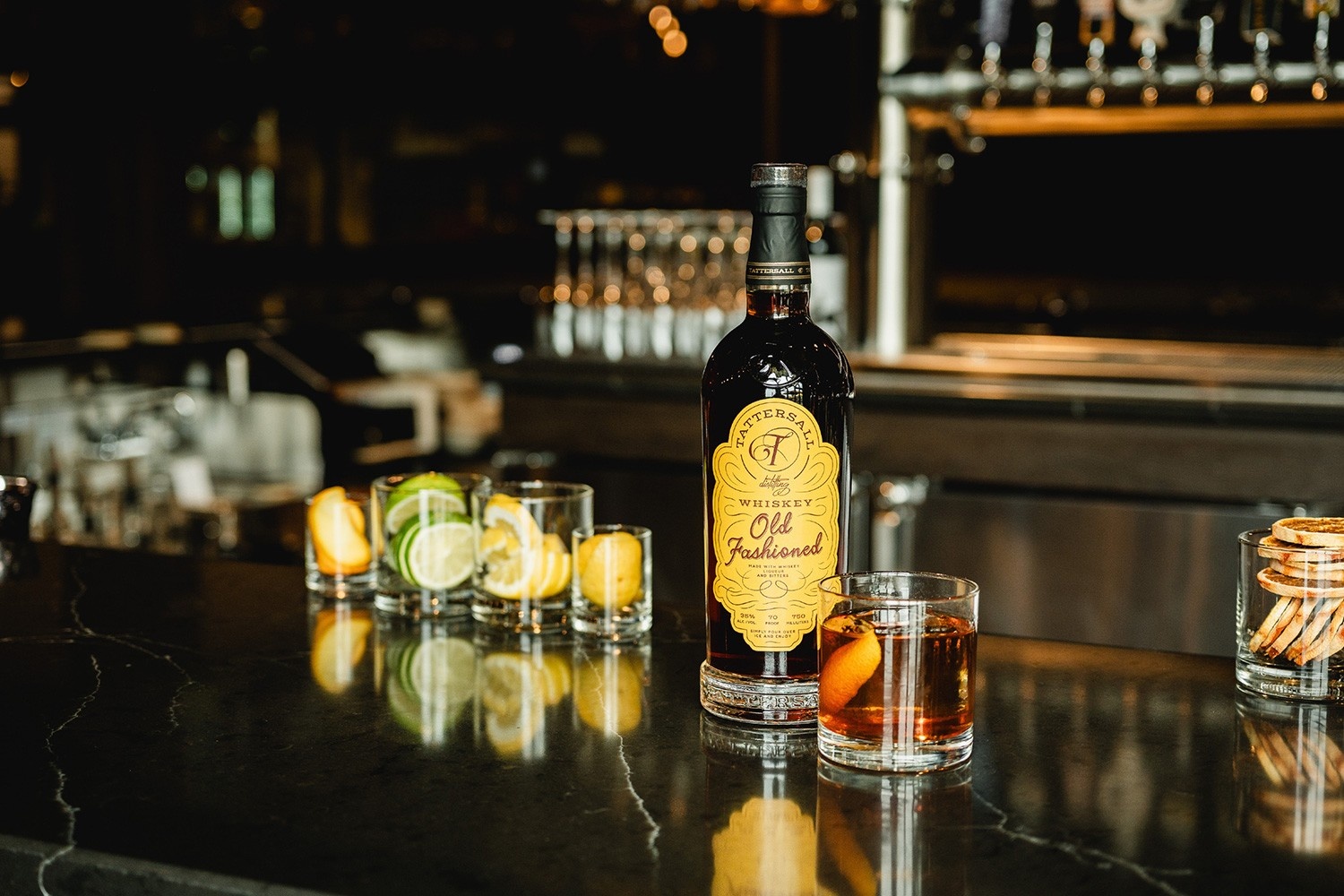
Tattersall also sells its Old Fashioneds in ready-to-drink form. Courtesy of Tattersall Distilling
Origin Story
According to Jeanette Hurt in her book Wisconsin Cocktails, Wisconsin’s distinctive brandy-based Old Fashioned dates back to the late 1940s, when the state’s liquor distributors discovered a cache of aged brandy. At the time, high-quality whiskey was in short supply since grain was being diverted to feed post-WWII Europe, so bartenders began using brandy to make Old Fashioneds — and subsequent marketing by brandy makers has ensured that it remains the spirit of choice.
At Tattersall, The Old Fashioned on the current menu is based on the version served in the original Minneapolis cocktail room, which was developed by co-founder and chief operator (and career bartender) Dan Oskey. “I think he poured more Heering Cherry liqueur than anybody in the country before we started Tattersall!” quipped Kreidler, noting that Tattersall’s sour cherry liqueur evokes a similar flavor by using Montmorency cherries from Traverse City, Michigan.

Stacy Brooks is a Minneapolis-based writer who has been covering food and travel since 2015. Her writing has appeared in over 35 publications, including Business Insider, Thrillist, Wine Enthusiast, and Midwest Living, and she wrote the Minnesota chapter of Fodor’s American Spirits. She blogs about food and travel at Tangled Up In Food and spirituality through a Jewish lens at Still Proofing. Follow her on Instagram at @_tangledupinfood.
North Stars: Energy Efficiency, Waste Management, Water Management


